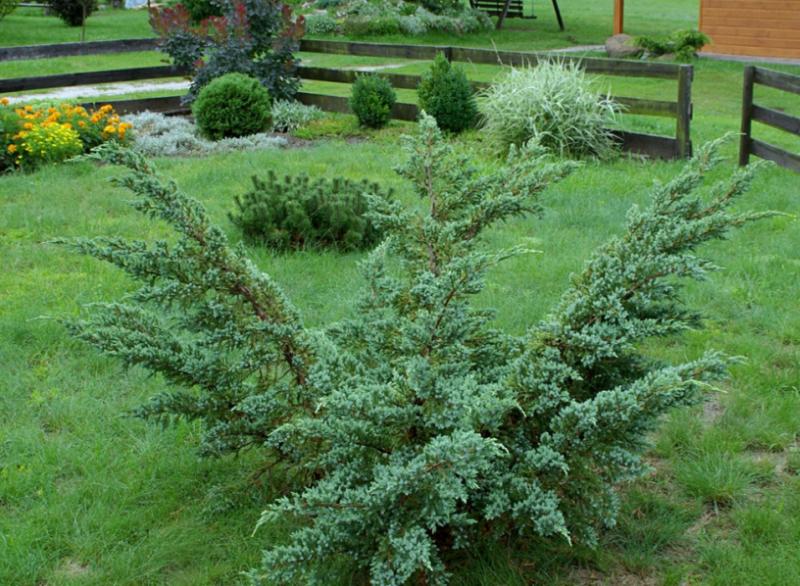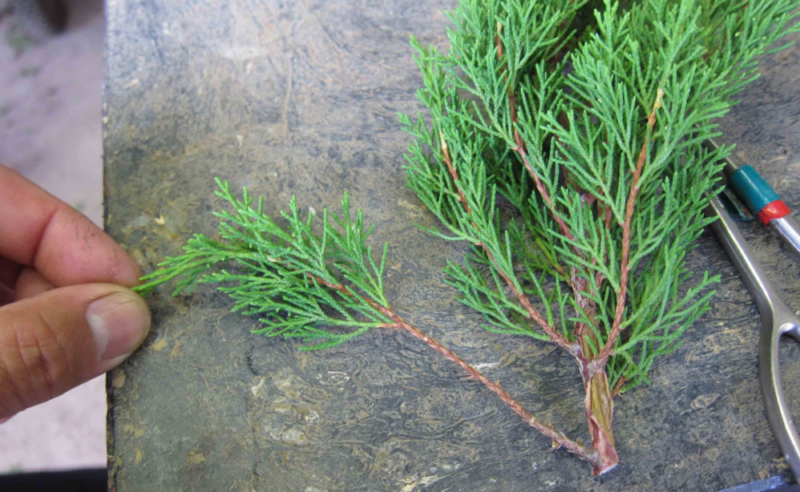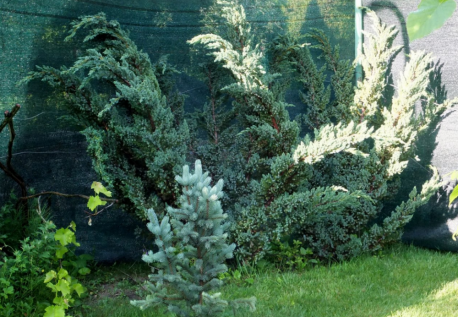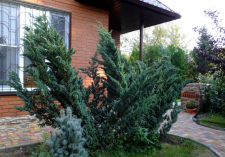Juniper Meyeri is one of the most popular evergreens in garden design. The shrub is distinguished by the original gray-blue needles.
Material Content:
Description of flake juniper variety “Meyeri”
Very often, "Meyeri" is also called single-seed, since its fruits contain only one seed. The mountains of Taiwan and China became the birthplace of this ornamental shrub. The plant is a ground cover culture of the Cypress family.
If you make a brief description of the variety, then it will be as follows: this type has pointed gray-green needles, located in whorls of 3 pieces. It differs in the density of small needles with an unusual shade of steel. Winter hardiness of the plant is average, reaches a height of 1 m, shoots spread. Meyeri is often grown as a bonsai.
Proper planting technology
Planting in the spring is preferable so that the bush has time to gain strength before the cold. The scaly juniper "Meyeri" prefers sunny places. In the shadow it will lose its decorative effect - the crown will become uneven, and the needles will fade. There are no particular preferences for the composition of the soil, but it is still better to plant a bush on drained soil that is moderately moist. Meyeri does not tolerate wetlands and excessive dampness.
If the site has heavy loam, add a mixture of peat, sand and garden soil to the planting hole. At the bottom of the hole drainage is made of expanded clay or chipped brick. When planting, fertilizers are applied, for example, to Kemir and 300 g of nitrophoska are added.
In order for the seedling to quickly take root and not get sick, before the events, its roots are soaked for about half an hour in the solution of the Epin preparation. The dimensions of the dug holes depend on the dimensions of the rhizomes of the bush. Juniper planting should take place very quickly so that the roots do not have time to dry. The plant is removed from the container and placed in a prepared pit. After planting, the juniper is abundantly watered and shaded from the sun for the first 2-3 weeks.
How to care for a plant
The evergreen shrub Meyeri does not need painstaking care and intensive top dressing, which greatly facilitates the work of the gardener.
Like all conifers, juniper does not need to be fed cow or bird humus, as this can lead to the death of the plant.
Do it only twice a year. In the spring, you need to make complex mineral compounds or nitrophosphate, and in the fall - potassium and phosphorus.
The roots of the shrub are very close to the surface, so you can not loosen the soil, it is recommended to mulch the soil around the roots. Coniferous litter or earth mixed with needles are great.
Meyeri is superbly molded. It is better to carry out a haircut in the spring. After sanitary pruning and the formation of a neat crown, the juniper must be sprayed with fungicides.
Under the weight of snow in the winter, the branches of the shrub can break. To prevent this, in the cold season the bushes are tied. If some shoots die due to frost, in the spring they are cut to healthy tissue.
Meyeri shelters many gardeners for the winter. It is recommended to do this in regions with a harsh climate. You can use snow as a heater. If it is not enough, encircled with spruce branches. Such shelter is obtained from burlap. In this case, the lower part of the bush is left open.
It is impossible to use a film for such purposes, since under it the needles preet.
Cypress family propagation methods
Having planted such a beautiful ornamental plant as juniper, you will probably want to propagate it.
You can separate the bushes yourself using one of the following methods:
- cuttings;
- by seeds;
- layering.
You can increase the number of Meyeri with cuttings all year round, but the best moment is spring. To do this, cut branches with a length of about 15 cm, and place for 2-3 hours in a growth stimulator. Then planting material is buried in nutrient soil by 1.5 cm. After 2-3 months, young plants can be planted, and after another year to determine their place in the soil.
The seed method is used mainly by breeders. For such purposes, it is necessary to collect seeds from three-year-old plants, germinate them and sow. Seedlings should appear only after two to three years.
All creeping junipers are best propagated by layering. For this, the branch is bent to the ground and sprinkled. For rooting, it is advisable to choose young shoots. Usually they give roots within six months, and by this time they can be separated from the mother bush.
Landscape design
The scaly juniper "Meyeri" is very decorative, because it is widely used in the design of landscapes of personal plots and parks. Especially beautiful are compositions from different plants, in which shrubs serve as a backdrop for flowering crops. An unusual shade of needles will make special notes in the design of the garden.
The plant is suitable for the formation of hedges, looks great like a potted culture. In the territories adjacent to the buildings, junipers are planted near the entrance or along the perimeter of the fence. Meyeri looks amazing in a single landing.
Juniper juniperus squamata meyeri is, despite its decorative effect, a very unpretentious plant that will become an original decoration of any garden.



















